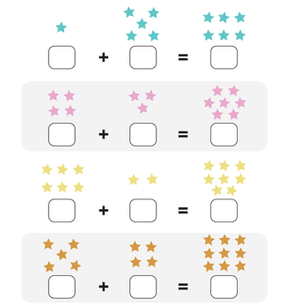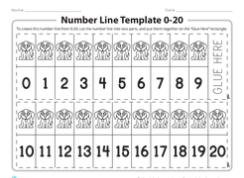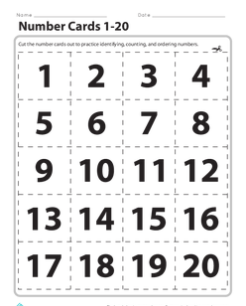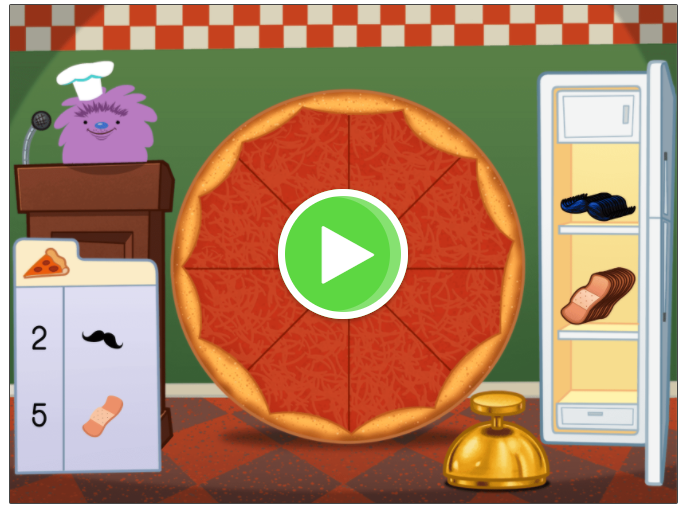Learning Centers
Common Core State Standards (CCSS) are vital in designing the curriculum and instruction of every educational process. Significant educational transformations in New York will emanate from instructional and curricula changes. To improve Number Sense in preschool, the educator will have to adopt new learning strategies. The expectations of the learning outcomes that students should demonstrate are shaped by curriculum and instruction (Kemp & Poole, 2018). Increased opportunities for differentiated learning are realized through learning centers. Students can demonstrate an understanding of math concepts and practice by integrating technology into learning styles.
Superstar Addition
Superstar Addition’s purpose is to help students in counting down the stars by finding and writing single-digit addends. The instructor will incorporate computers and projectors in the classroom to play a relevant song to improve the climate in this learning center, such as “Starlight, Starbright, let’s add these numbers right!” is commonly used. The preschoolers will count all the stars representing the sum to complete the mathematics equation. This learning center will enable learners to practice with the support of teachers to boost their confidence in counting and addition and learn how to write math numbers within 10.
Steps involved in the performance and assessment
- Playing the “Starlight” song to engage the students.
- Providing instructions for the students before they begin.
- Counting the stars in each group.
- Writing the numbers in the box below them.
- Writing the sum in the last box.

Checking to see many students struggling with the counting and assisting them where necessary
Number Cards
The primary objective of Number Cards of 1-20 is to help preschool children practice identifying, counting, and ordering numbers within the range. This learning center improves students’ future capabilities in adding, division, multiplication, and subtraction functions in math class. The math teacher needs to avail at least one set of Number Cards in the classroom and a projector and a personal computer to demonstrate the process. The learning objective enables the learner to order, count, and know what comes before and after any number ranging from zero to 20.
Steps involved in the performance and assessment
- Introduce and explain to the student ordering numbers.
- Playing the “Count to 20!” video.
- Writing and illustrating the word ‘order’ on the board.
- Showing the 0-20 Number Line.

- Showing students how to cut out and glue the number line together.
- Displaying the numbers 1-20 in order and counting with the whole class.

- Handing out and telling students to start cutting numbers and gluing.
- Going around and assisting any struggling student with the task.
- Bring students to explain the next activity after they finish.
Counting Pizza Party
Students believe there is no part like Counting Pizza Party, which helps in enhancing their number skills. The purpose of this learning center is to teach Number Sense due to its thought-provoking components and interdependence on various math operations. Counting Pizza Party is a math game that allows the preschoolers to count the number of toppings correctly and add them to the pizza to create a match in the customer’s order (Lempp, 2017). Since the game is virtual, the teachers appreciate the significant role of technology in enhancing classroom learning by using computers and a projector to play and display the videos. Upon finishing the count, the students will ring the bell to hear the loud counting of the toppings. The wacky toppings and funny characters in Counting Pizza Party make the Number Sense practice more appealing, especially for preschool children.
Steps involved in the performance and assessment
- The teacher issues instructions for the game.
- Counting the correct number of toppings and addition.

- Bell rings and counts the toppings loud.
The rationale behind the design of the learning centers
The Internet has become a powerful tool for learning in the contemporary classroom. The rationale of learning centers includes managing the learning environment and teaching subject-matter content (Mitchell & Foresteiri, 2018). Using the Internet, the instructor can play online songs to engage the learners. For instance, the “Starlight, Starbright” is helpful in Superstar addition to achieving Number Sense. The number of songs the teachers integrate will depend on the math concept to be learned. It will improve the learner’s understanding of the topic in mathematics class. For instance, Superstar Addition relates to one or more math themes, showing interdependence (Lempp, 2017). However, to help the centers run smoothly, small sizes are desired because of the academic and social learning opportunities. The students also need to take time and familiarize themselves with the material used in the center to avoid possible behavioral challenges.
Number Cards have been associated with positive impacts in developing Number Sense among learners. The teacher will choose the type of video to play for the students based on the targeted aspect children should create. Such consideration is helpful in the comprehension of mathematics concepts. For instance, cutting numbers and gluing them orderly allow students to improve their numbering and counting abilities (Lempp, 2017). Fundamental aspects of the mathematical operation are also developed through Number Cards since the students will be given time to count and order the numbers individually.
Counting Pizza Party is different from other learning centers since both the learner and machine count the number of toppings. The students are also more involved in the party since the virtual games feel like a real pizza party. Overall, through learning centers, teachers can integrate technology to provide an interactive and exploratory educational approach that allows students to quickly build their Number Sense (Kemp & Poole, 2018). The activities are also vital in helping students reinforce, extend, and apply math concepts in real life. Therefore, learning centers provide different ways of addressing learning needs.
References
Kemp, K., & Poole, S. (2018). MTSS & math: The elementary essentials. National Professional Resources.
Lempp, J. (2017). Math workshop: Five steps to implementing guided math, learning stations, reflection, and more, grades K- 5 with video streaming. Math Solutions Publications.
Mitchell, D., & Forestieri, M. (2018). Simple STEAM: 50+ science technology engineering art and math activities for ages 3 to 6. Gryphon House.
